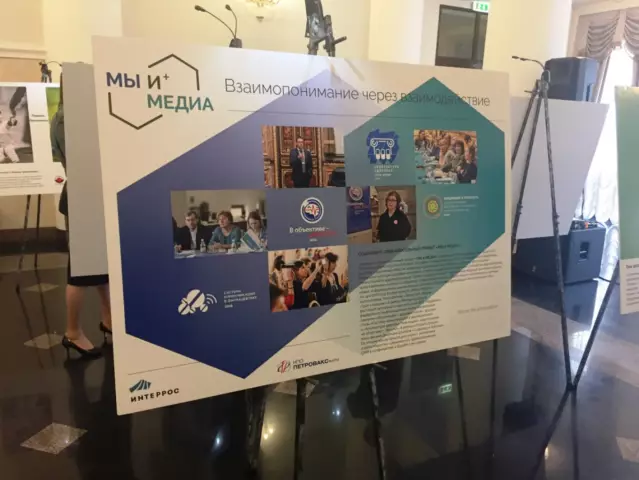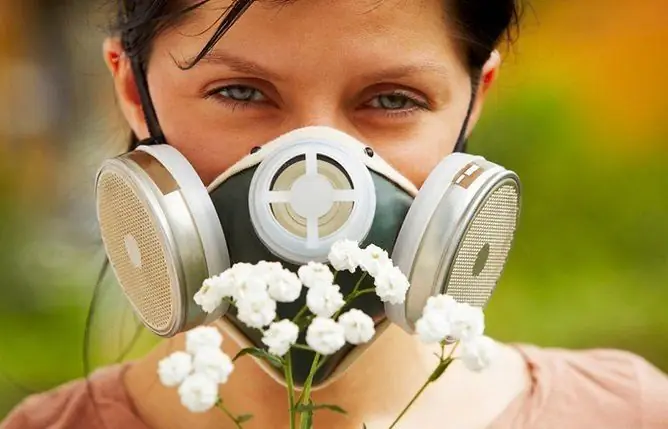- Author Rachel Wainwright [email protected].
- Public 2023-12-15 07:39.
- Last modified 2025-11-02 20:14.
Pneumoconiosis
General characteristics of the disease

Pneumoconiosis is a chronic lung disease that is caused by prolonged inhalation of dust and harmful compounds. In the overwhelming majority of cases, treatment of pneumoconiosis is necessary for people working in hazardous industries. Currently, doctors know 6 forms of the disease. The classification is based on the severity of pathological processes, their timing, features of development and course, as well as on the nature of inhaled dust and the concentration of harmful compounds.
The sources of pneumoconiosis are extremely diverse, but most often the disease manifests itself in people whose profession is associated with rock drilling, sifting, crushing, grinding and processing quartz, fibrous materials, granite. Prevention of pneumoconiosis is also necessary for workers who are engaged in electric welding, cutting metals, and finishing their surfaces. The most dangerous for humans is finely dispersed dust, the particle diameter of which does not exceed 5 microns.
Pneumoconiosis - symptoms and clinical picture
The initial stages of the disease are accompanied by the following symptoms:
- dry cough;
- severe shortness of breath;
- chest pains that appear with physical exertion and deep breathing;
- the appearance of concomitant diseases, in particular, deforming bronchitis.
The body temperature of a person, as a rule, remains within normal limits, however, some types of pneumoconiosis can be accompanied by an increase in temperature up to 38-40 degrees. At the same time, patients also note rapid fatigue, weakness, and sometimes a sharp weight loss.
With the development of fibrotic processes, a person develops respiratory failure, dry and moist fine bubbling rales, pleural friction noise. In the later stages, urgent treatment of pneumoconiosis is necessary, since the increasing respiratory failure can lead to decompensation of the cor pulmonale, which is often the cause of death of patients.
Treatment of pneumoconiosis

Therapeutic and preventive measures include high-quality nutrition with a high content of proteins and vitamins, competent organization of recreation, active sports, breathing exercises, smoking cessation, water procedures.
Modern fitness clubs are ready to offer you various types of training, selected specifically for your level of physical fitness or the presence of certain diseases.
Various adaptogens are used from medications. They have general stimulating properties, increase the body's nonspecific reactions, and promote the rapid recovery of damaged organs. Most often, patients are prescribed tincture of Eleutherococcus, pantocrine, nicotinic acid, vitamins of groups B, C and P.
If the patient does not have a pronounced pulmonary insufficiency, he is recommended: potassium chloride, iontophoresis with novocaine and ultrasound to the chest. All these procedures stimulate blood and lymph circulation, significantly improve the ventilation function of the lungs. With the onset and development of bronchitis, the patient is additionally prescribed expectorants and drugs that thin sputum (marshmallow root, thermopsis, iodine preparations).
Patients with a severe stage of the disease are transferred to inpatient or sanatorium treatment of pneumoconiosis. The most widely used techniques are hyperbaric oxygenation and oxygen inhalation. Bronchodilators and drugs that reduce pressure in the pulmonary circulation (reserpine, papaverine, aminophylline) are effective. With decompensation of cor pulmonale, patients are prescribed diuretics and cardiac glycosides. Corticosteroids are also widely used.
The prognosis of treatment and recovery depends on the stage of pneumoconiosis and those complications that often arise during the development of the disease. The prognosis is unfavorable in such forms as silicosis, beryllium and asbestosis, when the progression of the disease continues even after the termination of contact with harmful compounds. The rest of the forms are characterized by a benign course and favorable prognosis.
Prevention of pneumoconiosis
The basis for preventive measures is to reduce the level of dust in the workplace, the use of personal respiratory protection from dust and periodic medical examinations. The condition of the mucous membrane of the bronchi and lungs can be improved with the help of saline-alkaline solutions, mineral water or warm-humid alkaline inhalations. Prevention of pneumoconiosis also includes regular monitoring of enterprise personnel and large-frame fluorography. Taken together, all these measures make it possible to detect the disease in time and take measures to prevent its further spread.
YouTube video related to the article:
The information is generalized and provided for informational purposes only. At the first sign of illness, see your doctor. Self-medication is hazardous to health!






